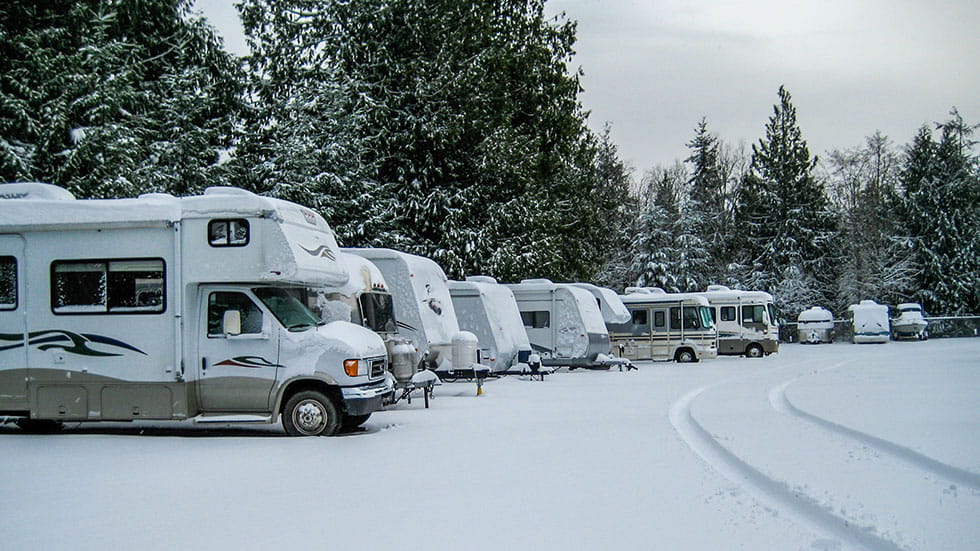As fall and the last warm, sunny days fade away, we bid goodbye to prime RV travel season. For owners of motorhomes, travel trailers, pop-up campers or fifth wheels, the coming of winter signals the time to ready your rig for cold weather. If winterizing your RV is something you dread, we’d we like to offer ideas for streamlining this seasonal ritual.
WHERE TO START
Though it’s certainly possible to go the do-it-yourself route, winterizing your RV can be a somewhat complicated process. If you’re intent on going it alone, you’ll find lots of how-to videos online.
Turning the task over to a professional at an RV service facility or mobile repair operation will cost you a few bucks ($100 to $200 is pretty standard, plus the cost of reversing the process in the spring), but the hours and aggravation you’ll save will likely be worth it.
Before you make an appointment, ask what the winterizing service includes. Processes can range from simply flushing the plumbing and filling the system with nontoxic RV antifreeze to a thorough inspection looking for roof leaks and plugging openings (for example, furnace/refrigerator vents) where critters can get in during storage. Before you drive away, also inquire about any other recommended tasks.
DO THE DIY DUTIES
Even if you pay a pro to handle the heavy lifting, there’s likely additional winterizing you’ll want to do. Don’t fret if you can’t get to it all right away. If your RV is parked at your house, you can plug it in and leave the furnace on a low setting. Sure, it’ll cost you a few bucks in electricity and propane, but the money you’ll save on repairing damage from any frozen pipes will justify the expense.
When you finally get around to filling and shutting off your propane cylinders, remove and store them separately. Using wheel chocks when you park is also wise.
A comprehensive wash-and-wax job may seem like a curious step for a vehicle you won’t use again until spring, but remember that bird droppings, tree sap, road tar and the like can permanently mar your paint if ignored for months. If your rig has a roll-up awning, wash it with a dedicated RV awning cleaner to help prevent discoloration while it’s in storage.
INSIDE JOBS
Be sure to take care of your RV’s interior, too. Secure drawers as well as cabinet and refrigerator doors in an open position to prevent mildew. While you’re at it, set out a couple of humane mousetraps just in case, and check them periodically. Strategically placing a few dryer sheets leaves a more pleasant aroma than mothballs and goes a long way toward repelling rodents.
Next, remove food, clothes and valuables. This step is especially important if you’ll be putting your rig up in a commercial site. When it comes to selecting a facility, climate-controlled indoor storage is the gold standard, though outdoor storage yards are more common and affordable.
Motorhome owners, this is also a good time to tend to all the important mechanical bits. Fill the gas tank and add fuel stabilizer. Get an oil change if it’s due. Top off the other fluids, air-up the tires and so forth.
Finally, get yourself a breathable cover made for the size and shape of your RV. Secure it using the provided tie-downs, and then sit back as you and your RV settle in for a seasonal slumber.

Prepping Your RV For A Long Winter's Nap
Getting your RV ready for cold weather doesn’t have to be a hassle
October 18, 2021 | 6 min read

Alan Rider
Please wait...

















